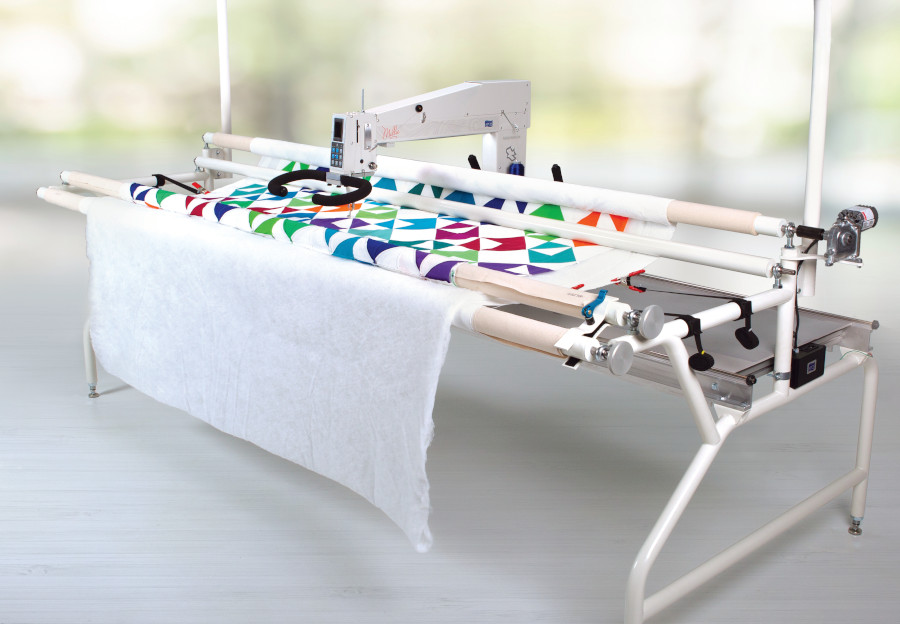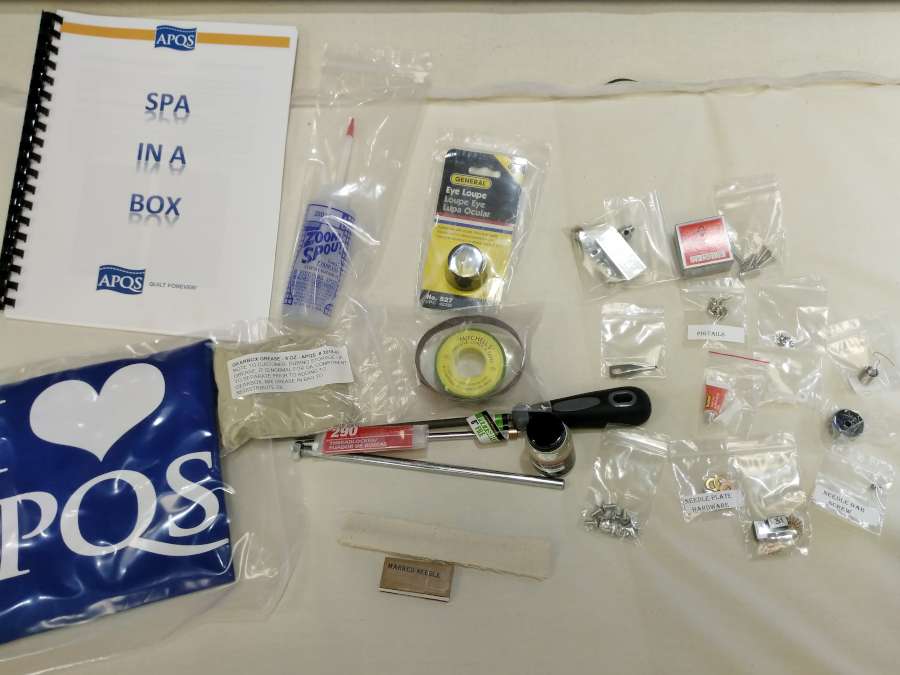Advice for longarm quilting newbies

New to longarm quilting? We asked 60 APQS owners from all across the country what their top pieces of advice to new longarm quilters are … and here’s what they said:
#10 Load correctly
Make sure your backing, batting and top are square, you have at least 4” extra on each side for backing and batting. Also, double-check to make sure you’ve loaded everything straight with no loose areas. Finally, remember to follow the right quilting order: ABC – Advance, Baste, Clamp.
For how-to articles about loading a quilt onto your APQS longarm quilting machine, visit this page.
#9 Practice effectively
Start with practice fabric and try out different designs. One thing that’s kind of fun to try is to write your name. Once you feel comfortable doing that, move on to charity quilts or panels. Work in sections and divide the space if it feels too big. Also, doodle and practice on a whiteboard, or a piece of plexiglass over the quilt (use electrician’s tape around the edges of the plexiglass to stop the pen). When doodling, pretend your wrist is in a cast and draw with your whole arm and body.
#8 Plan your design
Have a plan for the quilting. Try out one new quilting design/motif on each quilt and have the rest be something you are confident in doing. That way most of the quilt looks really good, but you’ve stretched yourself. This article has some great ideas on how you can “audition” design ideas on your quilt.
#7 Learn all you can
Take classes and watch YouTube videos. APQS has a great YouTube channel, as do many of the APQS Retailers, like Angela Huffman, Lauren Jackson, Karen McTavish and many others. Master the basics. As your skills improve, you can tackle more challenging techniques.
#6 Choose your thread and backing wisely
Select a thread for your quilting that blends with the colors in your quilt – taupe for warm colors (red, orange, yellow) and grey for cool colors (blue, green, purple) – and a busy back – a fabric with a lot of colors and patterns. This will hide a multitude of mistakes!
#5 Take care of your machine

Don’t be afraid of your machine. Learn how to thread, clean and oil it. Learn how to change a needle, bobbin and tension. Have a few spare parts on hand – fuses, springs, screws, spare bobbin case. Check if it needs oil every time you go to quilt and clean the bobbin area with every bobbin change. Get a spa treatment every few years, depending on usage. You can also reach out to your APQS dealer with help or questions!
#4 Adjust the tension
Don’t be afraid to adjust the tension on your machine. Run your bobbin and top tension as loose as possible while still having good tension. Test your tension on a small scrap off to the side before starting on your quilt. Also, ask yourself – who’s winning the tug of war? Loosen the winner or tighten the loser. Try using one type of thread until you are comfortable adjusting the other variables, then expand your thread repertoire.
#3 Understand thread breakage
There are many reasons for thread breakage. Here are some of the common ways you can address this issue: Loosen your tension, change your needle, try a different thread, rethread the machine, try a simpler thread path, make sure the bobbin is wound properly, look for burrs on pigtails and needle plate, aim for consistent speed, don’t have your backing too tight, try silicone (like Sewer’s Aid) on your thread, run a humidifier. As you become more experienced, you will get better at troubleshooting.
#2 Go easy on yourself
Everyone was a beginner once. Don’t expect perfection right away – practice, practice, practice! Just a little every day will make a big difference. Muscle memory is key and pantographs help build muscle memory and smoother quilting.
Also, remember that comparison is the thief of joy. Save your early practice pieces to pull out in a few months and marvel at how you’ve improved!
#1 Breathe and relax!
Loosen your grip and stand up straight. Take stretch breaks. Put music on and get in a rhythm while you quilt. Breathe! Enjoy the process!
Many thanks to the more than 60 quilters that contributed to this blog post!



